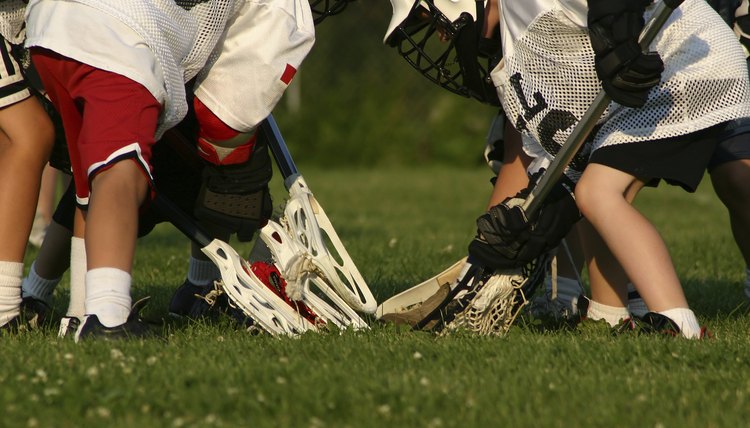Muscles to Work for Lacrosse

Lacrosse is an intense and physical game that requires speed, quickness, hand-eye coordination and a superior competitive instinct. Playing the game at a high level requires strong legs for running, powerful arms for shooting and strength in the upper body to help you hold your position and fend off check from the opposing team.
Hamstrings, Quads, Calf Muscles
The muscles in your legs are vital to your success in lacrosse. You need to develop your running speed, your explosiveness and your ability to anchor in a position without getting pushed off of it. Develop your speed by running interval sprints, running with a resistance parachute, and dping box jumping. Build strength in your legs by doing the leg press, leg curls and lunges. These exercises will build up speed and strength and help you become a more successful lacrosse player.
Chest and Arms
Lacrosse players need to have the strength and dexterity to catch the lacrosse ball, throw it and whip shots at the opposing goalie. The pecs, biceps and triceps are vital in all of these areas. Weight training exercises, such as the bench press and arm curls, will help you develop the strength to fire hard shots on net. Pushups will also help you develop the strength in the upper body to withstand physical play and hold your position without losing possession of the lacrosse ball.
Core Muscles
Since so much running is required in this demanding sport, you have to cut weight and develop your core muscles. Trying to play lacrosse when you are carrying around an extra 20 lbs. around your midsection is foolish. In addition to eating in healthy and sensible manner, you have to develop your abs, hips and other core muscles with crunches, twists, medicine ball training and kettlebell training if you want to play lacrosse effectively.
Back and Neck Muscles
Carrying a lacrosse stick while running at full speed will put pressure on your back and neck because of the position your arms will be in as you make plays on the move. However, if you have to twist to make a catch or reach forward to pick up a loose ball, it's easy to strain a muscle in your back or neck if you are not physically prepared. Medicine ball exercises such as performing twists and throws will help get your back and neck muscles prepared to throw the game.
References
Writer Bio
Steve Silverman is an award-winning writer, covering sports since 1980. Silverman authored The Minnesota Vikings: The Good, The Bad and The Ugly and Who's Better, Who's Best in Football -- The Top 60 Players of All-Time, among others, and placed in the Pro Football Writers of America awards three times. Silverman holds a Master of Science in journalism from the Medill School of Journalism.
